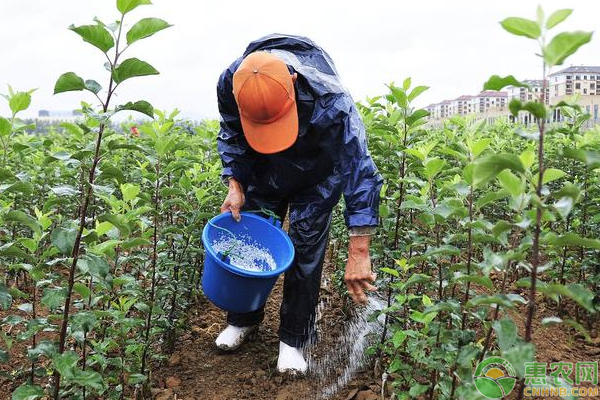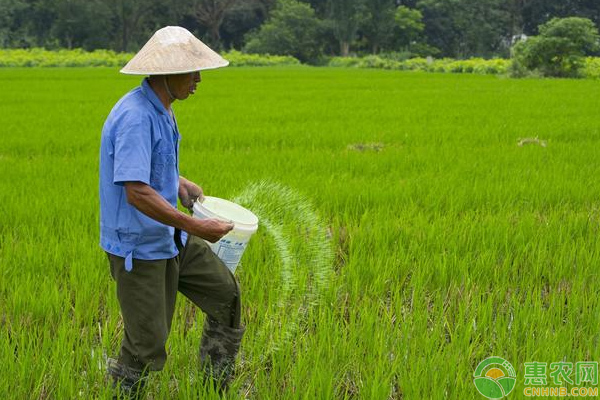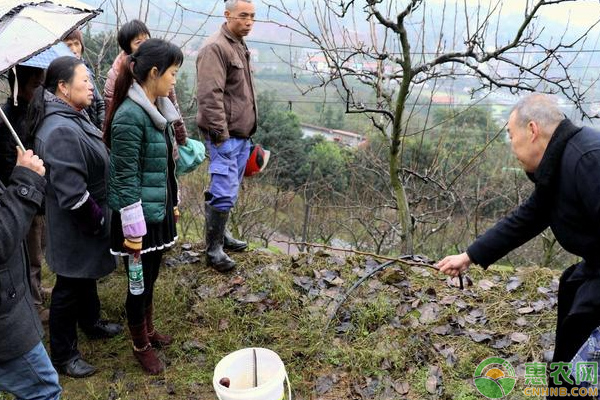Potassium fertilizer is an essential fertilizer for crop growth. Potassium fertilizer can promote crop metabolism, promote stem development, enhance photosynthesis, and improve yield and quality. The effect is remarkable. If the pot is insufficient, it will lead to serious flowering. The problem of reduced yield and quality, the following is a brief description of the types, characteristics and precautions of the use of potash, you can see. In scientific fertilization, we advocate the control of nitrogen fertilizer use and increase the amount of phosphorus and potassium fertilizer, which is particularly evident in fruit trees and cash crops. There are many kinds of potash in the market at present, and each potash has different characteristics and scope of application. Many farmers often find it difficult to use the potash when using fertilizer. Let me talk to you about the use of potash today! 1 What are the symptoms of potassium deficiency in crops? 2 What types of common potash are there? What are the characteristics? Is it best used in soil? 3 Third, how to correctly choose and use potash? First, what are the symptoms of potassium deficiency in crops? After the crop is deficient in potassium, the following performances are generally observed: 1 the straw becomes soft and easy to fall, the tiller is less, and the tiller quality is poor; 2 the tip and leaf edge of the middle and lower leaves of the plant turn yellow and then brown, and the edge of the leaf appears burnt and burnt; When the potassium deficiency is light, the leaves will have brown spots, but the veins and the middle leaves are still not green. When the potassium deficiency is serious, the whole leaves will turn reddish brown or withered and fall off; 3 after the potassium deficiency, the roots will become shorter and less. Plants are prone to premature aging; 4 potassium deficiency can also cause inconsistent fruit ripening, while the size of the head becomes smaller, the taste is worse, and the quality is degraded. Second, what kinds of common potash? What are the characteristics? Is it best used in soil? Potassium chloride, potassium sulfate, potassium nitrate, potassium dihydrogen phosphate, organic potassium, biological potassium, potassium humate, potassium fulvic acid, etc., of which the first five are the most common and most commonly used, and the grass ash is also a very good potash! 1. Potassium Chloride: It is fatty acid, has the advantages of low price and high potassium content, and is often used in field crops that are not sensitive to chlorine. Note that avoiding potassium supplementation of potassium crops, disabling potassium chloride, potassium sulfate can be used. 2, potassium sulfate: fatty acid, with low price, potassium-containing sulfur-free chlorine (including 50% potassium, 18% sulfur), suitable for most soils used in base fertilizer and top dressing, in onions, leeks, It is more common in crops such as garlic that require more sulfur and potassium. It is often used on crops that avoid chlorhexidine. Long-term use or use of potassium sulphate on soils with high calcium content is likely to cause acidification of the soil. In addition, potassium sulphate cannot be used on aquatic crops. For example, when rice is used too much potassium sulphate, hydrogen sulfide poisoning is likely to occur. 3. Potassium nitrate: Fertility neutral, belonging to chlorine-free potassium-containing nitrogenous fertilizer (containing 46% potassium, 13.5% nitrate nitrogen), featuring medium price, high potassium content, fast solubility and quick effect. It can not only supplement potassium but also supplement nitrogen. It is more suitable for topdressing, and it is not easy to acidify soil for long-term use. It is used in cash crops such as tobacco, melon and fruit, etc. Because it contains nitrate nitrogen, it will cause in paddy field. The loss of fertilizer and the excessive use of fertilizer in crops can easily lead to delayed maturity of crops due to excessive nitrogen fertilizer. Potassium nitrate can be used in the growth period where the crop requires a large amount of nitrogen; in addition, potassium nitrate can be used during the normal growth period and fruit expansion period of the crop, but the flowering result period, especially the fruit coloring period, is preferably potassium dihydrogen phosphate. 4. Potassium dihydrogen phosphate: one of the best phosphorus and potassium fertilizers on the market, with high content, high purity, full water solubility, quick effect, wide application range and high safety factor. It is widely used in field crops, cash crops, vegetables and fruits. Different growth stages of various crops, such as can be used as base fertilizer, top dressing, top dressing, but also can be applied, applied, sprayed, and used for soaking seeds... the benefits are far from complete! Too many counterfeit and shoddy products (more than 90% of the products on the market are fakes) is the only problem. When you buy, you must practice a pair of "eyes". Different application techniques of potassium dihydrogen phosphate on different crops and the identification method of true and false potassium dihydrogen phosphate. I wrote a lot of introduction articles some time ago, and I will not introduce too much here. I can read the history of my homepage if necessary. article. 5. Potassium humate: It is a kind of slow-acting organic solid potassium fertilizer. It is fertile and alkaline. Because it contains biologically active humic acid, it has strong adsorption, complexation and chelation, which can promote crops. More effective absorption and utilization of potassium has a good effect on activating soil, promoting crop growth and resistance, especially for complex humic acid potassium, and also providing nitrogen, phosphorus, potassium, organic matter and crops for crops. A variety of nutrients such as medium and trace elements can be widely applied to base fertilizer, top dressing and foliar spray fertilizer of various crops. Third, what are the precautions for the use of potash? 1. According to the geological conditions of the soil, the amount of potassium and the characteristics of different crops, choose the most suitable type of potash. In addition, the quick-acting potassium in the soil directly determines the effect of potassium fertilizer use. The plot of quick-acting potassium content of less than 40 mg per 1 kg of soil is a serious potassium-deficient plot, which can be supplemented by applying 20-20 kg of potash fertilizer per mu. Potassium, a potash with a potassium content of less than 80 mg, has a significant effect on potassium production. The quick-acting potassium content of 80-120 mg can be used without potassium supplementation. 2, pay attention to the mutual influence of fertilizers, scientific and effective appropriate amount of potassium. Adequate potassium fertilizer can promote the absorption of nitrogen fertilizer, and can also improve the cold resistance, lodging resistance and disease resistance of crops; the application of boron fertilizer can promote the absorption of potassium, while the excessive calcium, magnesium and zinc will inhibit the absorption of potassium. At the same time, excessive potassium fertilizer will reduce the absorption of calcium by crops. 3. Potassium chloride can be used basically for plots with more precipitation, convenient irrigation and good drainage conditions, except for chlorine-free crops. 4, corn, rice, cotton, sugar cane, sugar beets, sweet potatoes and legumes and oil crops, to maintain sufficient potassium fertilizer can achieve better yield and quality; but tobacco, fruit trees, sugar crops are best to use potassium sulfate, and cotton It is best to use potassium chloride for fiber crops, and to use lower-priced potassium chloride for field crops, which can save fertilizer input costs. 5. Most of the potash fertilizer is generally used as the base fertilizer and the early top dressing. The base fertilizer and the top dressing have the best effect. When using the potash fertilizer, the deep application to the wet soil layer is the best, so that the potassium ions are not easily fixed by the soil; When the soil is relatively dry, the potassium fertilizer is preferably sprayed with potassium dihydrogen phosphate. There are many nutrients needed for crop growth. Potassium fertilizer is a very important one. It is also the key nutrient for promoting flowers and promoting fruit. The above are the types, characteristics and precautions of potassium fertilizer shared by Xiaobian. You can learn from it when you use it. Shenzhen Guangyang Zhongkang Technology Co., Ltd. , https://www.syztreatment.com

